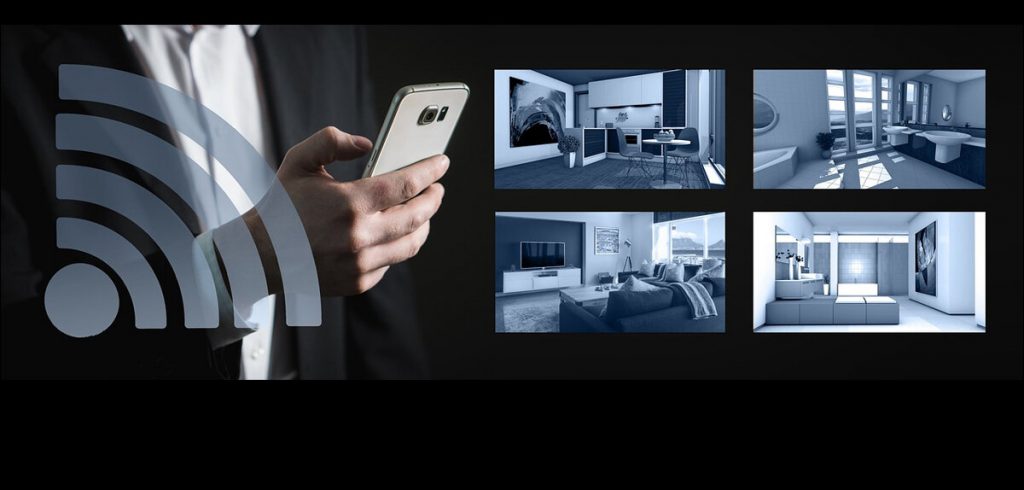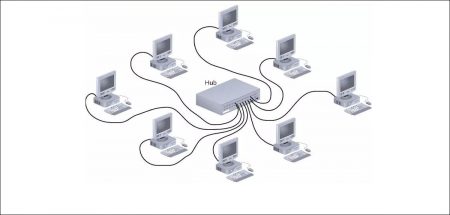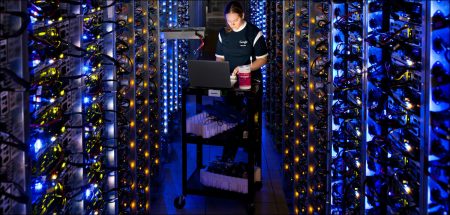With WiFi 7, it is not just additional bandwidth but the possibility to connect a whopping 200 concurrent devices, explains Sairaj Iyer.
Chipmakers Qualcomm, Intel, and Broadcom have already started planning their roadmap for what looks like a busy 2024. Of course, a major evolution is expected from hereon on the network. Codenamed 802.11be, the seventh iteration of the WiFi is ready. And this new technology is expected to enthrall consumers and enterprises alike.
WiFi 7 promises a theoretical max speed or throughput of 46 Gbit/s. Consumer devices such as laptops, personal computers, and smartphones may not ship out with the WiFi 7 earlier than 2024, but gear providers have already started rolling out AP (Access Points) and WiFi routers with the new framework.
Given the gargantuan demand for data and the rise of hybrid and hyper-connected enterprise, WiFi 7 could be a major enabler to organizations. To begin with, WiFi 7 promises newer possibilities with the ability to tether a vast number of end-points; it offers the benefit of integrating IoT end-points; and with blazing fast data-transfers, we may observe use-cases for AI/ML and AR/VR within the enterprise. The only problem right now – cost rationalization.
During and post pandemic, enterprises have already made the move to WiFi 5 and 6 version routers. Unlike a license-fees, infrastructure gear such as routers are not a recurring expense. And given that this technology is just around the corner, therefore, investing in this new technology may require a careful assessment. For reference, TP-Link’s Deco BE95, according to a Counterpoint research stat, is priced at $1,199.99. A dual-band WiFi 5 router in India, meanwhile, retails at Rs 3,000.
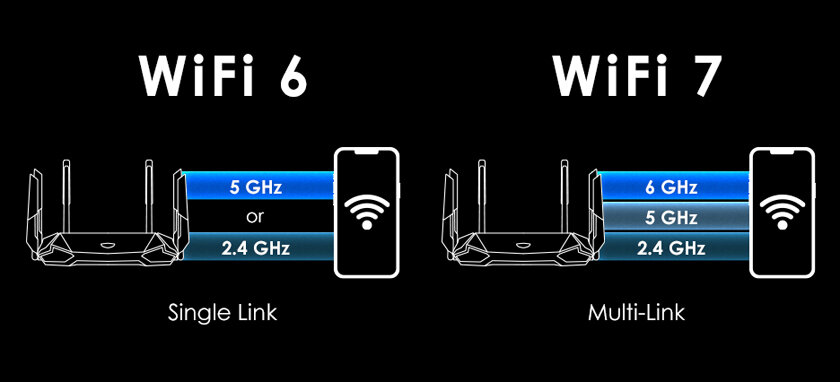
What’s Exciting?
According to estimates, WiFi 7 would be 4-5 times faster than its predecessors (6, and 6E). But that’s not all. WiFi 6E announced the availability of a new 6 Ghz band. Until 2020, this band remained off the reach owing to licensing fees until the US FTC got them dropped. With WiFi 7, it is not just the additional bandwidth but the possibility to connect a wider range, more devices, and faster speed. WiFi 7 is expected to cover a whopping 200 concurrent devices.
Newer technology launches such as Apple’s Spatial Computing, Artificial Intelligence, or the constant need to interact have resulted in significant data strain within the enterprise. To enterprises it is not only how much data gets consumed but also the speed, or the bandwidth. Although there is no specific estimate, an enterprise with 50 users is likely to utilize a 100 MBPS bandwidth. Add AI, VR, ML capabilities, the bandwidth is certain to throttle. This is where WiFi 7 with its ability to deliver a higher throughput could enable enterprises.
Some early-stage product launches have shown innovative use-cases besides bandwidth. Broadcom, for instance, announced the BCM6765 combo chipset which integrates a quad-core ARMv8 processor, dual 320 Mhz WLAN radios, Bluetooth connectivity (version 5), and 10G Ethernet. Broadcom’s latest launch is expected to push the envelope for retail businesses. Imagine a showroom where multiple devices need to be paired and controlled with a central hub. On its website, Qualcomm lists out additional use-cases: 8K gaming, extreme low latency (could be a game-changer in social initiatives such as Financial Inclusion or Healthcare) applications, multiple video conferencing sessions at the business.
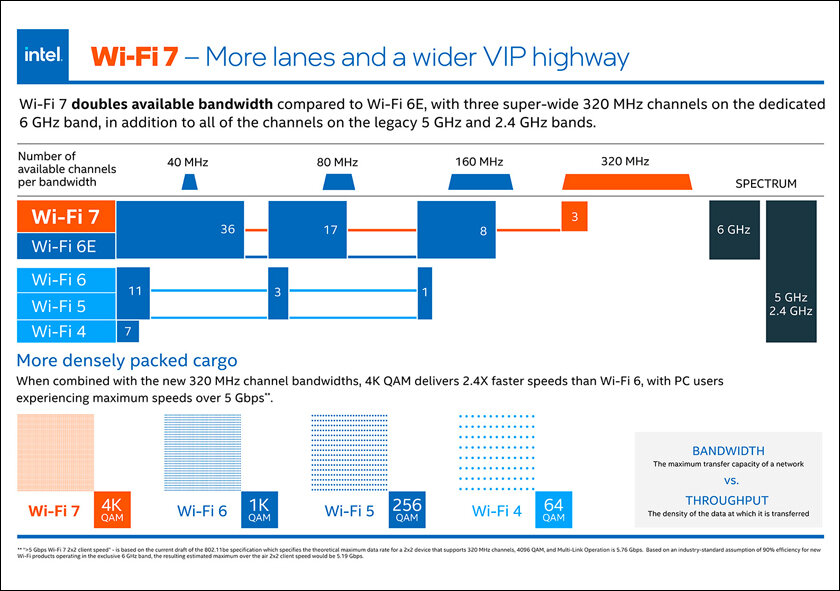
Comparisons & What Not
We will spare you with an easier answer – WiFi 7 is theoretically the fastest network router out there. And, thanks to lower latency, low power-consumption features, it stands out as an option for extreme applications. But speeds are only a theoretical representation and the actual benchmark numbers are likely to vary. WiFi 6E’s theoretical speed was placed at 5.4 Gbps and it offered the extra 6Ghz band. But, as also pointed out in a Wired article, as the connected device moves away from the AP, the router is likely to switch to a lower frequency. And this is where bandwidth throttles as the router switches to a lower frequency. Both 6E and WiFi 7 offer the ability to make an automatic switch.
According to WiFi alliance, 19.5 billion devices are in operation of the 42 billion in the history of WiFi. As of June, 3.8 billion WiFi enabled devices were shipped across the world. The latest 802.11be standards are being consulted and scrutinized in China. In India, a higher bandwidth could be a major benefit to several social programs, as well as the ability to provide dependable and faster internet to consumers. It could also enable enterprises in the creative sectors such as education, gaming, and AI/ML applications. However, India may have to do more given it does not feature among those considering a serious evaluation of this technology.
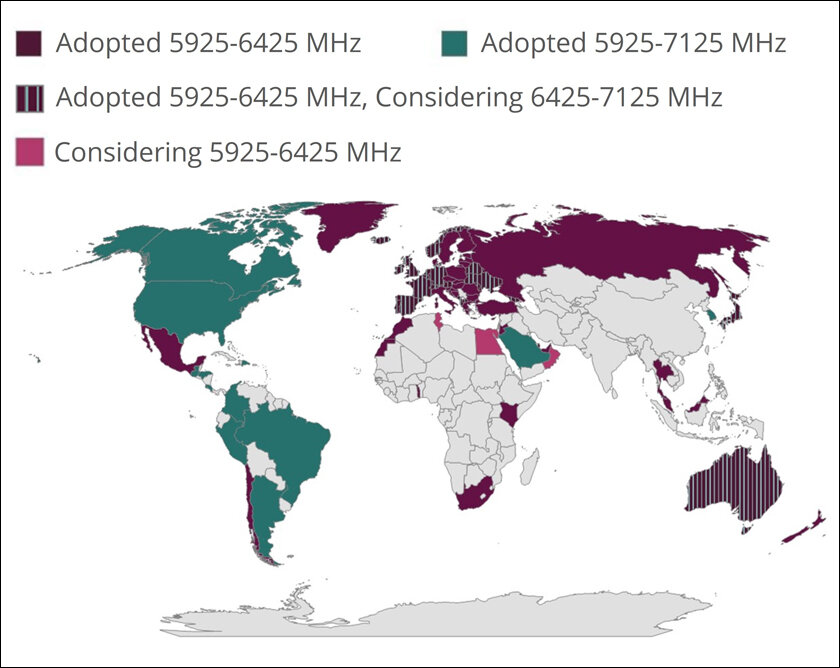
Moreover, a crucial aspect to be observed would be whether the regulator allows the 6 Ghz band for commercial activities. Mexico in Feb denied making a part of the 6 Ghz band minus a license cost. In India, a part of that band is currently used for Satellite operations of the Indian Space Research Organization. Besides, telecom operators in India had shown interest for commercial activities and a COAI (Cellular Operators Association of India) had expressed how spectrum allocation of this band could be good for the industry and the telecom sector in particular. A larger debate has ensued with the International Telecommunication Union expressing that such licenses should be delicensed. In an article with the Economic Times, Broadband India Forum asked for delicensing the 6 Ghz band to provide affordable broadband to rural areas. A larger roll-out of WiFi 6E or 7 may therefore depend upon the regulator’s decision.
WiFi 7 is touted to enthrall the experience for gamers, small offices, designers, and those with applications in AI/VR/ML. For a wider-use-case, it is likely that enterprises strategize before investing in networking gear.
In case you missed:
- None Found




